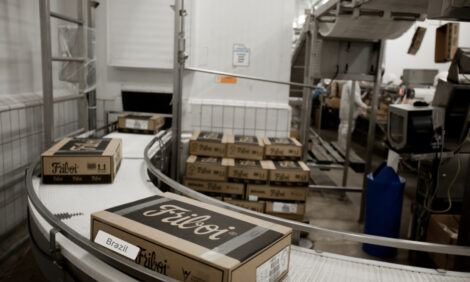



Pasture and Range Conditions Improve
US - Significant rains that have occurred in North Dakota and neighboring states in the Northern Plains the last three weeks have improved pasture and range conditions, write university academics, Tim Petry, John Anderson, John Michael Riley and Glynn Tonsor.Each Monday afternoon USDA-NASS releases a Crop Progress Report which shows state pasture and range conditions with a percentage rating in categories of very poor, poor, fair, good, and excellent. The first pasture and range conditions of the 2013 season were released for the week ending May 5 in the May 6 report.
North Dakota began the season with relatively dry conditions. For the first weekly report, NASS reported 23 per cent of the pastures and ranges in the combined very poor and poor categories and that number increased to 27 per cent for the week ending May 12.
However, rains since then have improved conditions with only 3 per cent rated in two worst categories for the week ending June 9. Southwestern ND was the driest region with some of the area rated as severe drought by the U.S. Drought Monitor http://droughtmonitor.unl.edu in March.
Places in Southwestern ND have received over 10 inches of rain with much of the area receiving 5 to 10 inches and a current U.S. Drought Monitor rating of normal. Prior to the rainfall, producers were making drought management decisions and cow-calf pairs and summer grazing feeder cattle were being sold.
The number of beef heifers for replacement in ND on January 1 was the fourth highest on record and likely some of those were sold to feedlots as well. The rains have improved pasture and hay prospects so forced selling of cattle has diminished in the last couple weeks. A livestock auction market that advertised a “cow-calf pair” special sale two weeks ago is now advertising a “summer grass cattle” special sale.
Severe drought in the Southern Plains in 2011 followed by a more widespread drought in much of the U.S. in 2012 caused poor pasture and range conditions to begin the 2013 season. In early May, 36 per cent of the U.S. pastures and ranges were rated very poor and poor compared to 17 per cent in 2012.
Conditions continued to deteriorate last year and by August almost 60 per cent of U.S. grazing land was rated in the two worst categories. This year conditions have improved on a weekly basis. For the week ending June 9, 24 per cent of U.S. pastures and ranges were rated very poor and poor compared to 27 per cent last year.
The Livestock Marketing Information Center (LMIC) groups states into six regions: West, Southern Plains, Great Plains, Corn Belt, Northeast and Southeast. To begin the season only the Southeast had improved conditions compared to last year. Conditions have improved on a weekly basis in each of the regions except the West. That region started the season with 37 per cent very poor and poor conditions and that deteriorated to 46.5 per cent for the week ending June 9.
Although conditions have improved in parts of the U.S., it is still early and drought can reoccur. Continued rains will be necessary since much of the country is attempting to recover from last year’s drought. Severe drought is still prevalent in Arizona, California, Colorado, Nevada, and New Mexico where over 50 per cent of pastures and ranges are in very poor and poor condition. New Mexico leads the way with 97 per cent in the two worst categories. Over 30 per cent of beef cows still reside in states with 40 per cent or more very poor and poor pasture and range conditions.
TheCattleSite News Desk


